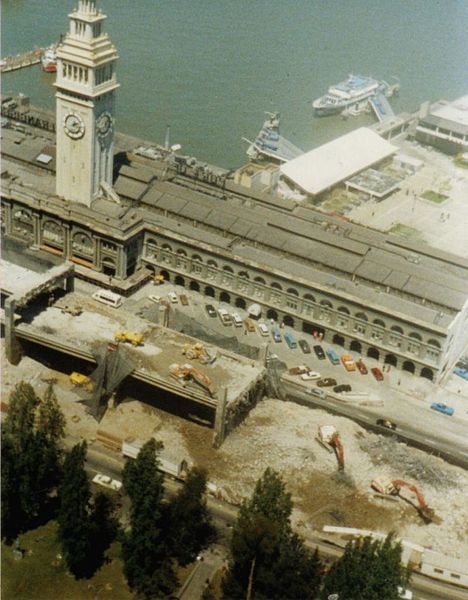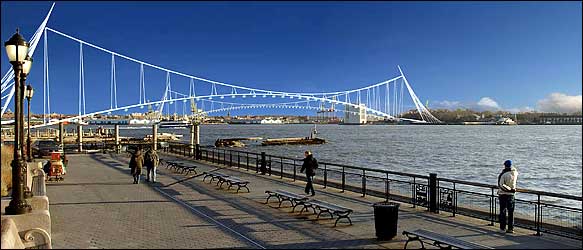links
I've been occupied with non-blog activities and I'm facing more of the same. In lieu of a new post of my own, I thought I'd offer some links to other sites I like.
 5th Avenue in Brooklyn at 10th Street, 1909. From Forgotten NY.
5th Avenue in Brooklyn at 10th Street, 1909. From Forgotten NY.
Forgotten NY is the first (and usually only) place I go to answer my questions about the history of New York's physical environment. The site is, in fact, much of my inspiration for starting the Built Environment Blog in the first place. Not only is the content brilliant, but the balance of imagery and prose is almost perfect. Also, the new Forgotten NY book by Kevin Walsh looks like the best thing ever.
 Photo by Mitch Epstein from Pruned.
Photo by Mitch Epstein from Pruned.
Pruned is probably my favorite blog. (Polis and Bird to the North are great too.) The guy that runs this site has a pretty amazing perspective on the world; he's changed my definition of what a landscape is and my understanding of how people shape it. Be careful going to this site, it's possible to get lost there for hours.
 'Painted Ladies' in San Francisco from Witold Rybczynski's column on Slate.
'Painted Ladies' in San Francisco from Witold Rybczynski's column on Slate.
I first encountered Rybczynski's work in my freshman year of college when I had to read City Life for an introductory Urban Studies course. It won the bronze for my favorite book of the class, losing only to The Death and Life of Great American Cities and The Social Life of Small of Urban Spaces. Several years passed before I discovered Rybczynski wrote for Slate -- now it's hard to endure the weeks between each post.
 The Rolling Bridge by Thomas Heatherwick Studios.
The Rolling Bridge by Thomas Heatherwick Studios.
A versatile designer who reminds me of Charles and Ray Eames, Thomas Heatherwick is at the start of what is hopefully a long and prolific career. Equally skilled in sculpture, design, and architecture, Heatherwick's work is a study in clever elegance. I first encountered his work watching a TV special that his discussed rolling bridge in London. My favorite project of his now is probably the Blue Carpet, which was built with the support of England's Commissions North (which almost made this list in its own right.)
 Screen shot from Tekkon Kinkreet from PingMag.
Screen shot from Tekkon Kinkreet from PingMag.
PingMag is a Japanese design zine. I have an infatuation with Asian design and these guys seems to have their finger on the pulse of it. Even if I'm not riveted by the topic of every piece they publish, the design and writing is consistently high quality.
Forgotten NY is the first (and usually only) place I go to answer my questions about the history of New York's physical environment. The site is, in fact, much of my inspiration for starting the Built Environment Blog in the first place. Not only is the content brilliant, but the balance of imagery and prose is almost perfect. Also, the new Forgotten NY book by Kevin Walsh looks like the best thing ever.
Pruned is probably my favorite blog. (Polis and Bird to the North are great too.) The guy that runs this site has a pretty amazing perspective on the world; he's changed my definition of what a landscape is and my understanding of how people shape it. Be careful going to this site, it's possible to get lost there for hours.
I first encountered Rybczynski's work in my freshman year of college when I had to read City Life for an introductory Urban Studies course. It won the bronze for my favorite book of the class, losing only to The Death and Life of Great American Cities and The Social Life of Small of Urban Spaces. Several years passed before I discovered Rybczynski wrote for Slate -- now it's hard to endure the weeks between each post.
A versatile designer who reminds me of Charles and Ray Eames, Thomas Heatherwick is at the start of what is hopefully a long and prolific career. Equally skilled in sculpture, design, and architecture, Heatherwick's work is a study in clever elegance. I first encountered his work watching a TV special that his discussed rolling bridge in London. My favorite project of his now is probably the Blue Carpet, which was built with the support of England's Commissions North (which almost made this list in its own right.)
PingMag is a Japanese design zine. I have an infatuation with Asian design and these guys seems to have their finger on the pulse of it. Even if I'm not riveted by the topic of every piece they publish, the design and writing is consistently high quality.

